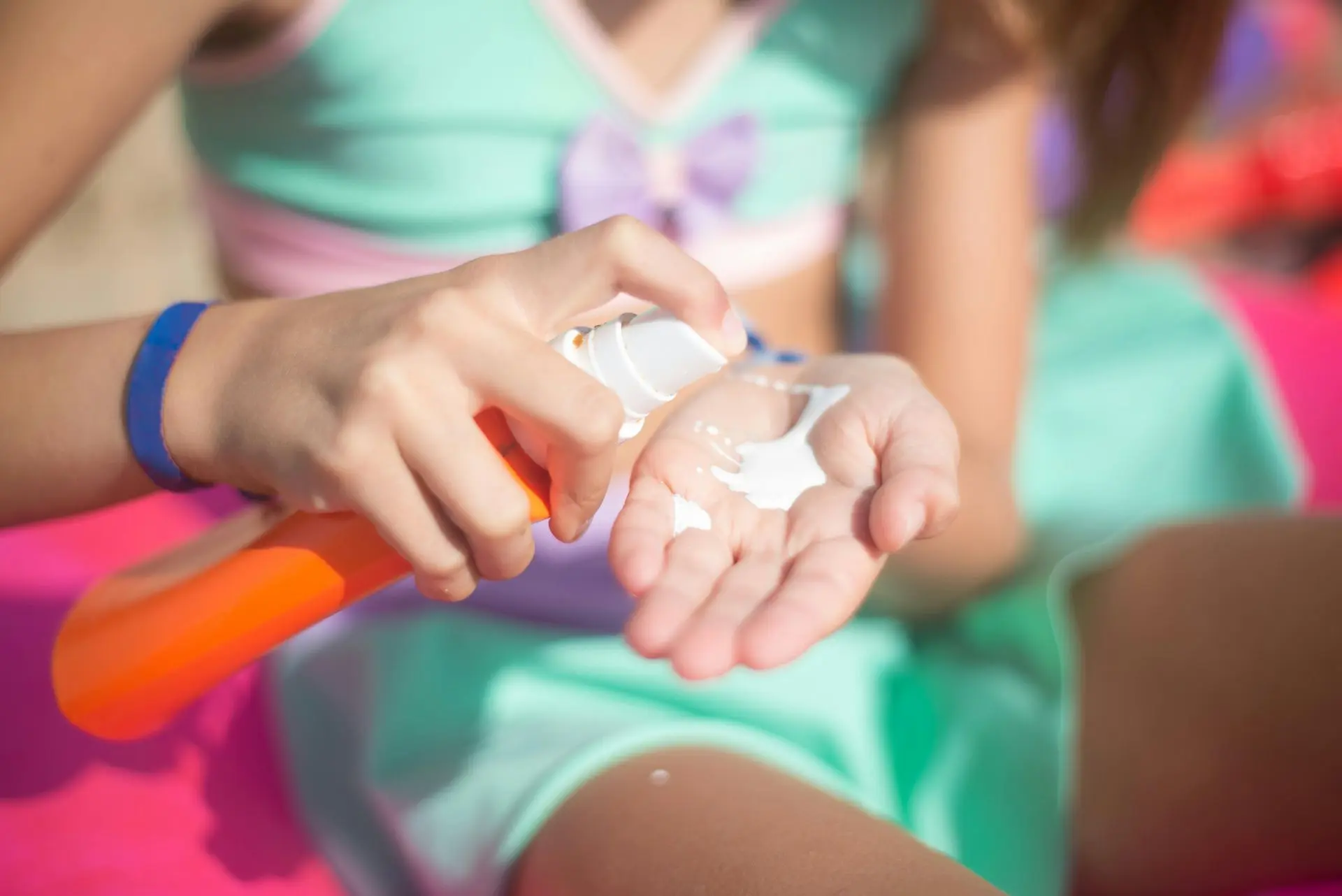Wearing sunscreen is one of the simplest and most effective ways to protect your skin from sun damage, premature aging, and skin cancer. Yet even the most well-intentioned sunscreen users make mistakes that reduce its effectiveness. Whether you’re applying it too late, skipping it on cloudy days, or forgetting certain parts of your body, small missteps can leave your skin vulnerable.
Here’s a complete guide to the most common sunscreen mistakes—and how to apply and reapply SPF the right way.
Are you using too little sunscreen?
One of the biggest sunscreen mistakes is simply not using enough. Many people apply a thin layer thinking it will be sufficient, but sunscreen needs to be used generously to do its job.
So, how much is enough?
Dermatologists recommend about 1 ounce (a full shot glass) to cover your entire body. For your face and neck alone, a nickel-sized dollop is a good start. If you’re using a spray, make sure you apply until the skin glistens and rub it in thoroughly for even coverage.
Why skipping sunscreen on cloudy days is a bad idea
Just because the sun isn’t shining doesn’t mean your skin is safe. Up to 80% of UV rays can penetrate clouds, meaning your skin can still suffer damage on overcast days. Whether it’s sunny, cloudy, or even snowing, UV rays are always around—and they don’t take days off. Make SPF part of your everyday routine, not just your summer one.
Is your sunscreen expired? Check the date.
Using expired sunscreen is like using a safety net full of holes. Over time, the active ingredients degrade and lose effectiveness, leaving your skin unprotected.
Most sunscreens have a shelf life of three years, but that can vary based on storage conditions (e.g., high heat can break down the formula faster). Always check the expiration date on the bottle, and if the texture, smell, or color seems off—toss it and get a fresh one.
When should you utilize sunscreen for greatest results?
Timing is entire. One casual mistake is applying sunscreen too late, like when you're already at the beach or pool. For chemical sunscreens, which need a moment to take in and power up, it’s key to employ them 15 to 30 minutes before sun revelation.
Mineral sunscreens (with zinc oxide or titanium dioxide) offer immediate security, yet it’s nevertheless a profitable notion to give them a few minutes to settle into the skin back then heading outdoors.
How often should you reapply sunscreen?
Even if you nailed the initial application, failing to reapply sunscreen is a big mistake. Sunscreen wears off due to sweat, swimming, towel drying, or simply time.
Follow the two-hour rule: Reapply sunscreen every two hours, or immediately after swimming or sweating, even if the label says it’s water-resistant. No sunscreen lasts all day.
Are you forgetting these commonly missed spots?
You might be surprised how many areas people miss while applying sunscreen. Some of the most neglected spots are:
- Ears
- Back of the neck
- Scalp (especially if you have thinning hair or part lines)
- Tops of the feet and toes
- Backs of the hands
- Lips (use an SPF lip balm)
These areas are just as vulnerable to UV damage as the rest of your body. Make it a habit to double-check these spots during application.
Do you only use sunscreen during the summer?
Sun protection isn’t just for beach vacations and poolside lounging. UVA rays, the ones responsible for skin aging and long-term damage, are present year-round—regular on cold or cloudy days.
Again, UV rays can penetrate through windows, meaning you’re in the open while driving, working near windows, or sitting indoors during the day. A lightweight, extensive-spectrum SPF is perfect for daily indoor and outdoor security.
Sunscreen isn’t your only defense—pair it with protective gear
While sunscreen is key, it's only one piece of the sun-safety puzzle. Maximize your coverage by connecting SPF with:
- Wide-spilled hats
- UV-protective clothing
- Sunglasses with UV protector
- Seeking shade, uniquely in relation to 10 a.m. and 4 p.m.
Using physical barriers in supplement to sunscreen reduces your sun publicity and keeps your skin is healthier in the long run.
Conclusion: Sunscreen done right
Sunscreen is your skin’s best bud—when used truthfully. By avoiding these ordinary mistakes, applying the faultless amount, reapplying gradually, and covering often-missed areas, you give your skin the protector it highly deserves.
Remember:
- Use enough (1 oz for the body, nickel-sized for face)
- Bring to bear 15–30 minutes back then going outside
- Reapply complete 2 hours or after sweating/swimming
- Cover ears, scalp, feet, and further simple-to-forget areas
- Wear it daily—rain or shine, indoors or out
- Pair with shade, hats, and UV-protective gear
Taking these small more steps can do a major difference in how your skin looks and feels now—and years from now.